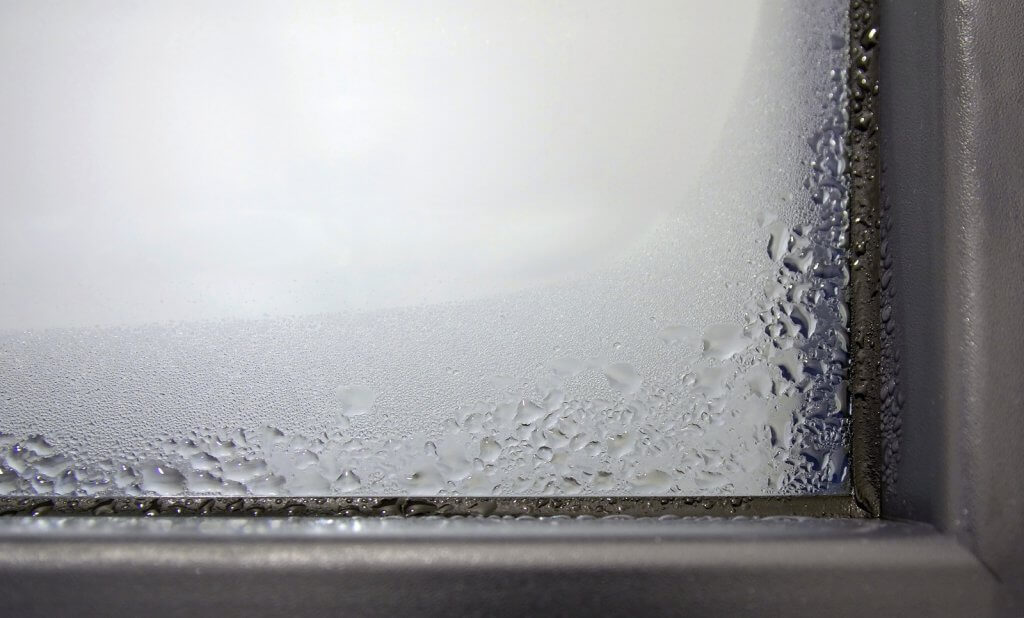
Tenants can complain of damp problems in a rental property. Often, if the property has adequate heating, ventilation and damp proofing the problem can be one of condensation. This article gives a tenant some helpful tips in order to stop condensation and mould formation
Condensation in dwelling houses is mainly a winter problem particularly where warm moist air is generated in living areas and then penetrated to colder parts of the building. Condensation is often caused by the lifestyle of the Tenant; for example, the average tenant will produce condensation through cooking, washing, internal drying and many young professionals do not adequately ventilate their property because they are often out during the day and when they return and it is cold and they do not want to open windows to ventilate the property – the result being that there is no ventilation of the property during day or evening. The presence of water condensed on walls, ceilings and other cold surfaces can support mould growth which is a serious problem for both Landlord and Tenant because of the health risks associated with mould spores.
Mould growth can appear as pinpoint black spots, on any damp surfaces such as plaster, wallpaper and timber and is associated with condensation problems in many buildings. The mould fungi have been identified as the source of many health problems, including infections, asthma, allergies and sinusitis. Moulds produce allergens, irritants, and in some cases, toxins that may cause reactions in humans. The longer surfaces are under conditions of high moisture or local high humidity the greater the probability of mould growth developing. Mould can be removed by washing the surface with a disinfectant or a fungicidal wash – must be used in accordance with the manufacturers’ instructions. However, this is only a temporary measure and the Tenant must deal with the source of the condensation to stop the mould reappearing.
If the Tenant’s lifestyle results in damage to the property through the mould growth or dampness which damages the building and its furniture, the Tenant may be responsible for the cost of any repairs. It is unlikely that rented accommodation can be completely condensation free, even a new one. However, mould growth and condensation can be prevented by a combination of: adequate ventilation; adequate heating; and a reduction of humidity. Below we have detailed steps which Tenants can take to minimise the creation of condensation and mould growth, and reduce any potential impact on the property and to your health:
- Dry all windows, window sills, and any other surfaces that have become wet from condensation forming.
- Pull furniture, such as wardrobes away from walls, and keep tops of wardrobes clear, to allow air to circulate.
- Try to keep the interior temperature of the property at a fairly constant level.
- Do not use flueless gas or paraffin heaters as a way of trying to heat a property and save costs, as excessive quantities of moisture are produced from such heaters; for example, for every litre of paraffin burnt over one litre of moisture vaporises into air, increasing the chance of condensation.
- If possible, always hang your washing outside. If this is not possible, you could hang it in the bathroom, with the door closed, and window slightly open for ventilation. NEVER dry washing on radiators as this will add to the moisture already in the air.
- If you use a tumble dryer, ensure it is ventilated to the outside, or that it is the new condensing type.
- Close doors when your kitchen is in use, keep lids on saucepans when cooking, and try to ventilate either by opening a window slightly, or using the extractor fan. Ventilate the kitchen for about 20 minutes after use.
- Keep bathroom doors closed when bathing, and open windows slightly afterwards. Ventilate the bathroom for about 20 minutes after use.
- If your property is prone to condensation then consider using a de-humidifier unit which will remove excess moisture from the air. De-humidifiers come in a range of sizes and cost very little to run and draw out the excess moisture from the air helping to keep the condensation under control.
If after taking the steps above, the condensation does not reduce, undertake the checks below and report anything to K&G Lettings Limited, or your Landlord:
- Check all accessible plumbing for leaks.
- Check guttering and down pipes for cracks and blockages (for example, leaves).
- Check overflows and waste pipes under sinks for leaks.
- Check possible roof leaks.
- Check damaged outside walls or eroded pointing.
- Check for a high garden or path levels overlapping the damp proof course.
- Check all extractor fans are working efficiently.



